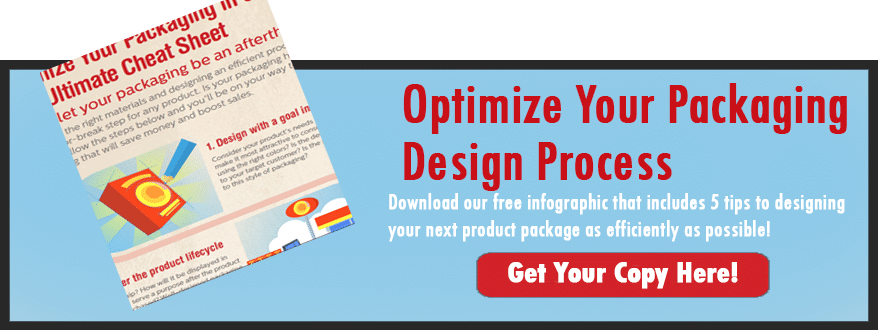Packaging As Abstract Art?
Generally speaking, when one thinks about abstract art, names such as Jackson Pollock or the late great Georgia O'Keeffe come to mind.
And, when one thinks about product packaging, one of the last things anyone would ever think of would be the kind of works produced by the legendary artists mentioned above.
Fine art and packaging are two words that are rarely found in a sentence together. And yet there they are in the sentence before this one.
By now, you are probably wondering how I will attempt to draw parallels to these vastly disconnected topics.
And while it may come as quite a surprise, my answer to your query is... Quite easily.
Although abstract art and packaging are not commonly written about in the same article, that is precisely what is happening here.
Now, you may think that I am grasping at straws. But, as I shall show today, packaging and abstract art have been entwined on various occasions in the past. And they will likely continue to be in the future.
Even though these occurrences are rare, many brands have leveraged abstract art as a revenue-generating dynamic of their product packaging design.
Today's article explores the crossroads where packaging design and abstract art meet. When you have finished reading this article, you may have some inspiring design ideas of your own.
What Does Abstract Art Have To Do With Packaging?
At first glance, it may seem a fool's errand to discuss these two things as if they are somehow relevant to each other.
I mean, when was the last time you lost yourself in product packaging the same way you would when looking at fine art in a museum?
As crazy as it may sound, abstract art has played a role in selling copious amounts of products for many different brands.
Don't believe me? Here are one hundred and fifty examples for you to feast your eyes upon. Impressive, isn't it?
How Can Abstract Art Be Used In Successful Product Packaging?
When it comes to using abstract art as a successful branding and design tool in the context of your product packaging, there are more examples from the real world than you might expect!
And new ways of thinking about the relationship between abstract art and packaging are popping up all the time.
Sometimes, it's not so much about abstract art on packaging, but packaging on abstract art.
Regardless of the unexpected ways in which these two ideas come together, one thing is for sure. It makes for compelling imagination fuel.
And, outstanding abstract packaging designs can inspire buyers to purchase your products over less impressive visual branding elements.
Can Packaging Itself Be Considered A Form Of Abstract Art?
When you run the names of different types of everyday packaging supplies through an artificial intelligence's neural network, the answer is yes.
This brings us to the meat of today's post.
The section below features several examples of standard packaging supplies re-imagined as visually stunning pieces of abstract art.
Each material mentioned below has been run through wombo.art 's dream neural network. The resulting image is this artificial intelligence's interpretation of how these materials should look based on the pictures the network finds on the web tagged with the name of the packaging.
I like to think of this as "when computers dream of packaging."
Each material presented below utilizes a different filter from dream. Below each piece, you will find a description of the material and a regular picture of the substrate for comparison.
Additionally, you will find information on the material itself and the uses, applications, and related information about that particular packaging supply.
We hope that you find the following items both informative and inspiring.
Need help optimizing your packaging design?
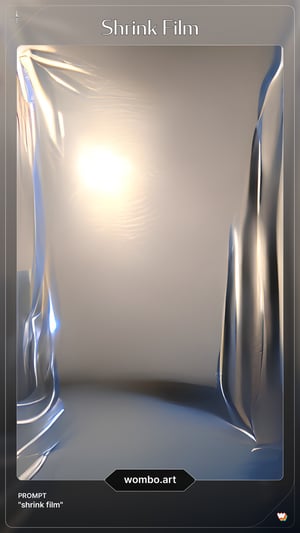
Keyword: Shrink Film - Filter: HD
1. Shrink Film
Shrink Film is a prevalent flexible packaging material used to package thousands of different types of products.
Shrink film is applied to the product being packaged with a shrink sealer. The use of this machine results in your product being placed inside of a plastic bag made from shrink film, which is sealed on one or more sides.
Next, the loosely bagged product is sent into a heat tunnel. This device works somewhat like the oven in your kitchen.
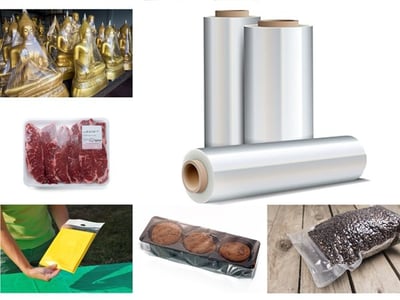
The bagged product moves from the shrink sealer to the tunnel via a conveyor belt. Once the product reaches the heat tunnel, the item moves onto another conveyor inside the tunnel. Once inside, the product is exposed to a heating element.
The heating element heats the shrink film as the products move through the machine, resulting in the film shrinking uniformly around the product inside the bag.
Shrink film is commonly used for packaging food products, electronics, books, board games, and countless other consumer goods.
You can find shrink film in supermarkets, department stores, auto parts stores, food marts, country stores, hardware stores, and many other brick-and-motor and online retailers.
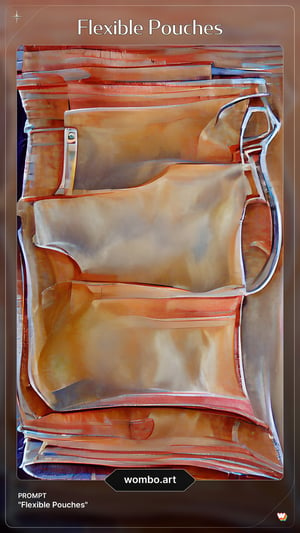
Keyword: Flexible Pouches - Filter: Wuhtercuhler
2. Stand-Up Pouches
Stand-Up Pouches (also known as flexible pouches) are a kind of flexible bagging that often features both protective packaging and easy-open capabilities.
Most of the time, they are made from plastic or metal foils. However, you can find stand-up pouches made of other materials such as paper.
These little wonders exploded onto the packaging market in the '90s. Their popularity has skyrocketed due to many dynamics which resonate positively with millions of happy consumers.
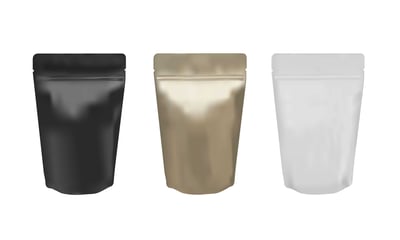
These dynamics include sustainability, low purchase price, low shipping cost, ease of use, and branding capabilities.
Flexible pouches can be printed with bold and vibrant eye-catching imagery, graphics, and typographical elements that have proven to win consumers the world over.
In addition to boasting one of the lowest carbon footprints of all the most popular packaging materials, these bags are also loved by consumers for their user experience.
Flexible pouches allow consumers to feel the texture of the products inside of the package, making them an interactive shopping experience.
Additionally, they often feature transparent windows that allow consumers to visually inspect the items before making a purchase.
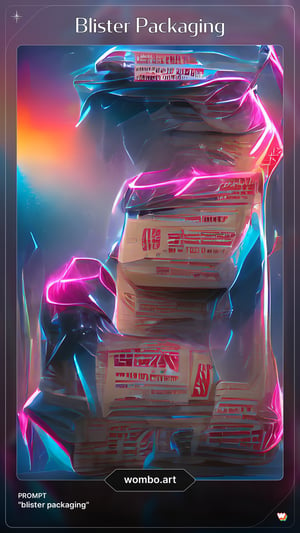
Keyword: Blister Packaging - Filter: Synthwave
3. Blister Packaging
Blister packaging or blister packs are part of a family of packaging materials known as carded packaging. Blister packs are closely related to skin packs but feature slightly different dynamics.
Generally speaking, blister packs usually feature two components. A plastic thermoformed "blister" and a backer.
Most of the time, backers are made of paperboard. Sometimes the paperboard is also encased in a secondary piece of plastic that is connected to the blister.
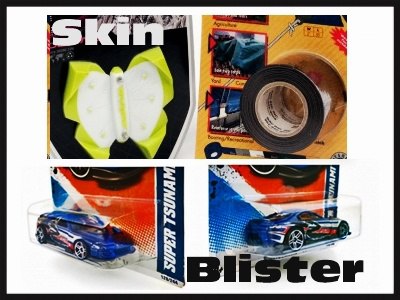
Blister packs are used for various applications, including packaging hardware, car parts, pharmaceuticals, toys, batteries, and many other consumer goods.
While some blister packs are designed with easy open capabilities, those that are not have been known to induce wrap-rage.
Blister packs are popular with consumers as they defend the products inside and may act as a form of protective packaging.
You can find blister packs in supermarkets, department stores, auto parts stores, toy stores, food marts, county stores, and many other retail institutions.
Most blister packs feature recyclable materials. However, It should be noted that any labels or adhesives must be removed before the materials are disposed of into a single-stream recycling bin.
Failure to do this may result in the materials being thrown into a landfill.
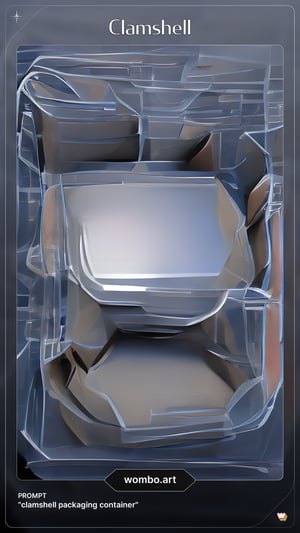
Keyword: Clamshell Packaging - Filter: HD
4. Clamshell Packaging
Clamshell packaging (or simply "clamshells") is another member of the carded packaging family.
Clamshells feature two identical or non-identical plastic "shells" which are conjoined on one side. In contrast, the opposite side can be opened.
The opening side usually features a locking tab or similar element to keep the container closed until the consumer is ready to open it.
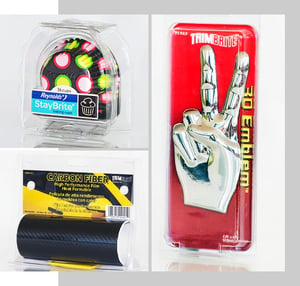
Clamshells are popular in both the consumer goods and food packaging industries. You can find clamshells in supermarkets, hardware stores, auto parts stores, department stores, food trucks, food marts, gas stations, and various other retailers both on and offline.
Most of the time, clamshells are made from fully recyclable materials. But, they must be cleaned of contaminants, food particles, labels, and adhesives before being put in a single stream recycling hopper.
Failure to clean them of these items prior will most likely result in the containers ending up in your local landfill.
.jpg?width=300&name=Skin_Packaging_TradingCard(1).jpg)
Keyword: Skin Packaging - Filter: Wuhtercuhler
5. Skin Packaging
Skin packaging (also known as skin packs) is another member of the carded packaging family. Like blister packs, they feature a backer made of paperboard.
Skin packs differ from blister packs in that the plastic layer on top of the backer on a skin pack is vacuum sealed and molded to the exact shape of the product.
Skin packaging is used for packaging food, auto parts, and other kinds of consumer products. One common application for skin packs is the packaging of smoked salmon.
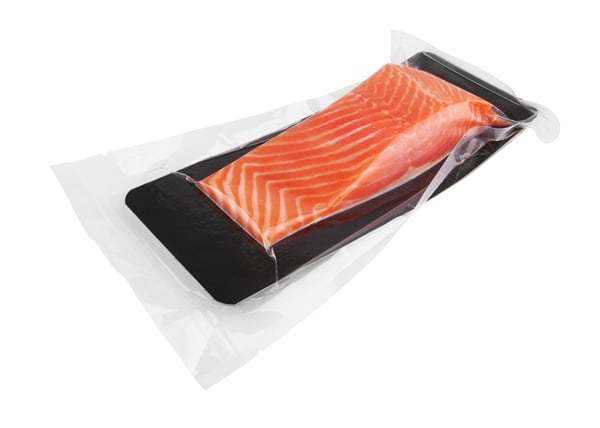
Skin packs are found in many different retail settings, including supermarkets, auto parts stores, food marts, and other similar retail environments.
Most of the time, skin packaging materials are recyclable. But, like many of the materials mentioned above, they must be cleaned of all food particles, contaminants, labels, and adhesives.
If these things are not removed from skin packaging before the materials are placed in a single-stream recycling container, they will generally end up in a landfill.
Do You Need Help Designing Your Packaging?
While you may or may not be interested in using abstract design elements for your product packaging, you will at some point need to design or redesign your packaging.
If you would like some help in optimizing your packaging design, download the free packaging optimization cheat sheet below.
This resource will help you design product packaging that will engage consumers and help you to sell more products.
About Nathan Dube
As the Digital Marketing Specialist at Industrial Packaging, I am honored to create content for such a phenomenal company and work with one of the greatest teams in the Packaging Industry. Whether creating a video, writing blog posts or generating other pieces of content and multimedia, I am always excited to help educate and inspire our prospects and clients to reach their highest potential in regards to their packaging processes and needs.




